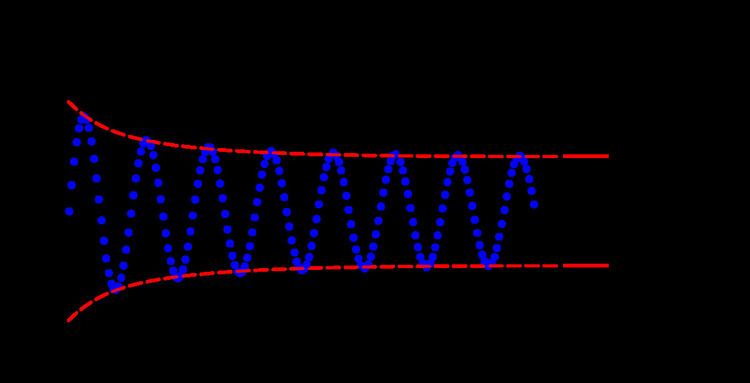 | ||
In mathematics, the oscillation of a function or a sequence is a number that quantifies how much a sequence or function varies between its extreme values as it approaches infinity or a point. As is the case with limits there are several definitions that put the intuitive concept into a form suitable for a mathematical treatment: oscillation of a sequence of real numbers, oscillation of a real valued function at a point, and oscillation of a function on an interval (or open set).
Contents
Oscillation of a sequence
Let
The oscillation is zero if and only if the sequence converges. It is undefined if
Oscillation of a function on an open set
Let
More generally, if
Oscillation of a function at a point
The oscillation of a function
This is the same as the difference between the limit superior and limit inferior of the function at
More generally, if
Examples
In the last example the sequence is periodic, and any sequence that is periodic without being constant will have non-zero oscillation. However, non-zero oscillation does not usually indicate periodicity.
Geometrically, the graph of an oscillating function on the real numbers follows some path in the xy-plane, without settling into ever-smaller regions. In well-behaved cases the path might look like a loop coming back on itself, that is, periodic behaviour; in the worst cases quite irregular movement covering a whole region.
Continuity
Oscillation can be used to define continuity of a function, and is easily equivalent to the usual ε-δ definition (in the case of functions defined everywhere on the real line): a function ƒ is continuous at a point x0 if and only if the oscillation is zero; in symbols,
For example, in the classification of discontinuities:
This definition is useful in descriptive set theory to study the set of discontinuities and continuous points – the continuous points are the intersection of the sets where the oscillation is less than ε (hence a Gδ set) – and gives a very quick proof of one direction of the Lebesgue integrability condition.
The oscillation is equivalence to the ε-δ definition by a simple re-arrangement, and by using a limit (lim sup, lim inf) to define oscillation: if (at a given point) for a given ε0 there is no δ that satisfies the ε-δ definition, then the oscillation is at least ε0, and conversely if for every ε there is a desired δ, the oscillation is 0. The oscillation definition can be naturally generalized to maps from a topological space to a metric space.
Generalizations
More generally, if f : X → Y is a function from a topological space X into a metric space Y, then the oscillation of f is defined at each x ∈ X by
